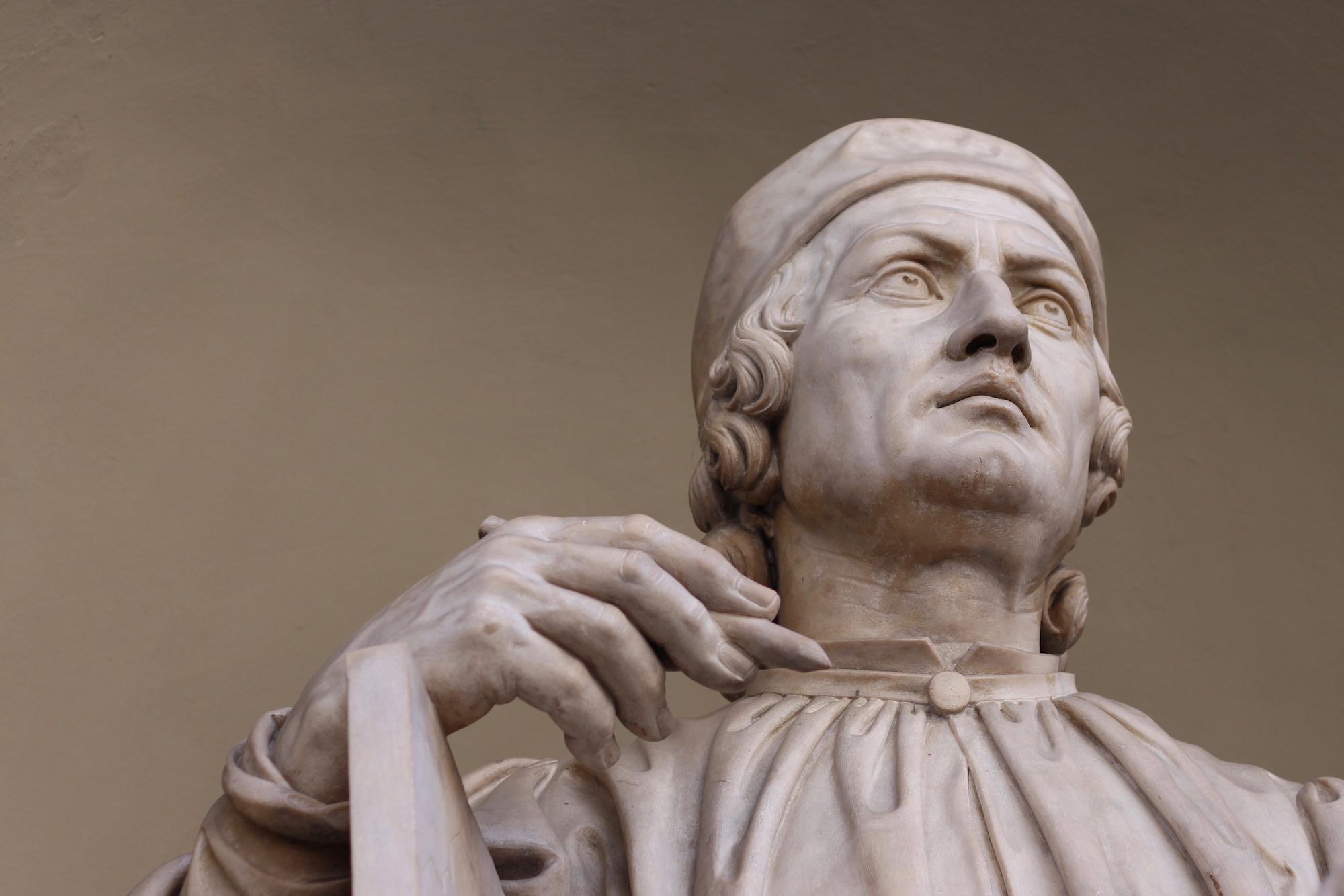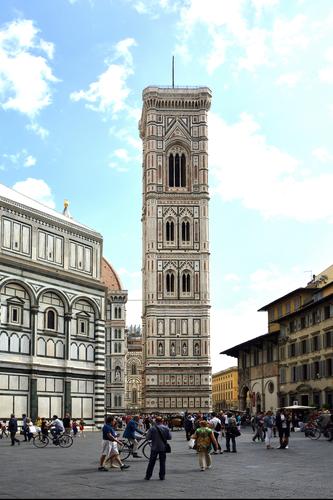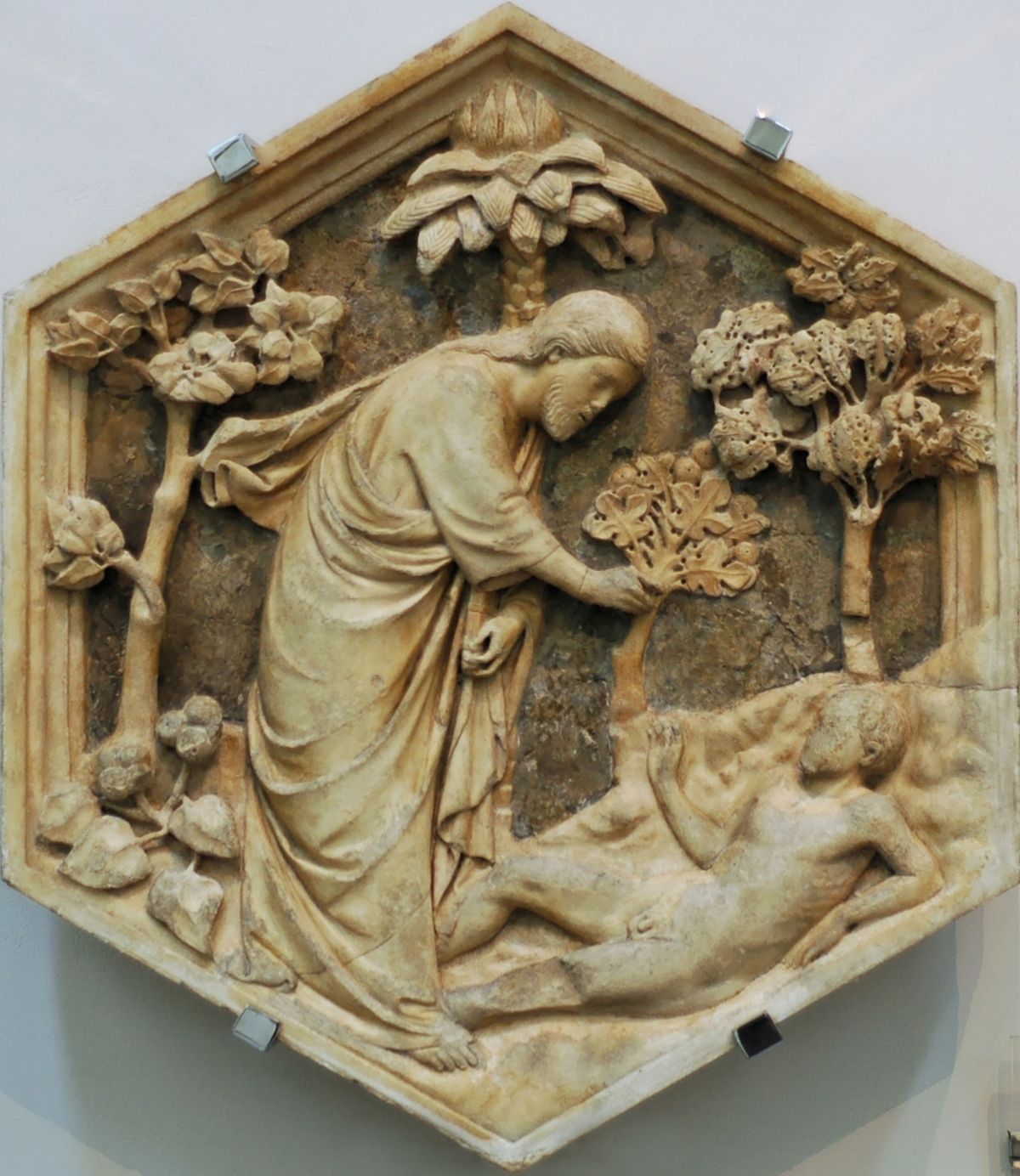Giotto's bell tower,made between 1334 and 1359, represents one of the greatest expressions of the Florentine Gothic architecture of 1300 as well as being a splendid synthesis of sculpture and faith: aligned with the facade of the Cathedral, it constitutes one of the most symbolic monuments of Christianity.
The first foundations of the bell tower date back to 1298,when the works were entrusted to the master master Arnolfo di Cambio: the same year that work began on the construction of the new cathedral of "Santa Maria del Fiore".

In 1334 he became the new chief masterof this ambitious architectural project, Giotto who began to deal mainly with the construction of the first floor of the bell tower. When the foundations of the bell tower began to be laid, the idea of the Florentines was clear: the city of Florence had to "arm itself" with a new monument that presented itself religious and majestic at the same time. Not even too veiled was the idea of having a bell tower that could face up to the other bell towers of rival cities:the tower of Pisa (terminated in 1275) and the tower of the Cathedral of Siena (built at the same time).
According to an ancient legend it would seem that Giotto was not particularly interested in the basilica project, but at the moment there is no concrete evidence to this effect. According to the original worktop, the bell tower had to end with a pyramid-shaped cusp of fifty arms (equivalent to the current thirty meters), while its overall height was to reach 85 meters. According to scholars inside the Museum of the Opera of the Cathedral of Siena it is possible to find a drawing inspired by this design idea.

Although the bell tower bears its name, Giotto was only able to follow the construction work for the first three years since he died in 1337.
Although Giorgio Vasari claims that the construction work, concerning the first floor of the tower, had been continued by the painter Taddeo Gaddi, the only successor,of which there is really trace in the documentation kept at the Museum of the Opera, is the sculptor Andrea Pisano.
According to Giotto's original design, the architectural design had to contemplate not so much the construction of a tower, but a very high structure with a horizontal extension. Work on the bell tower was interrupted during the Black Plague, which struck the whole of Europe between 1346 and 1352, and were resumed by Francesco Talenti who completed the work in 1359.
Today Giotto's bell tower looks like a large tower with a square base about 14 meters wide, with a coating made with white, red and green marbles. The sculptural decoration of the bell tower is very rich,it features hexagonal tiles, lozenges, reliefs and statues at natural height. The statues of the niches are sixteen and were made by Florentine artists and masters of 1300-1400: today, however, in the niches there are only copies of the statues because the originals are kept in the Museum of the Opera.

The bas-reliefs, whose authors include Pisano, Luca della Robbia and Giotto, are hexagonal. The reliefs on the west side are striking because of the originality of the topics covered, as the work in the fields is represented.
On the upper floor of the lozenges are represented the seven planets: "Moon", "Mercury", "Venus", "Mars", "Sun", "Jupiter" "Saturn".
In the decorations placed on the south side the human figure with his works of ingenuity becomes the protagonist. Upstairs in the lozenges are depicted various virtues: "faith", "hope" and "charity", "prudence", "justice", "temperance" and "fortress".
The reliefs on the east side celebrate human activities, especially those related to agriculture, while on the upper floor are represented: "grammar", "dialectic" and "rhetoric", "arithmetic", "music", "geometry" and "astronomy".
On the north side, the seven sacraments are represented:"baptism", "confession", "marriage", "sacred order", "cresima", "eucarestia" and "extreme anoit"; while in the bezel of the ancient portal of the Cathedral is depicted a madonna with the child of Andrea Pisano.
Image source: wikipedia, tuscany people, 10 things










 Map
Map